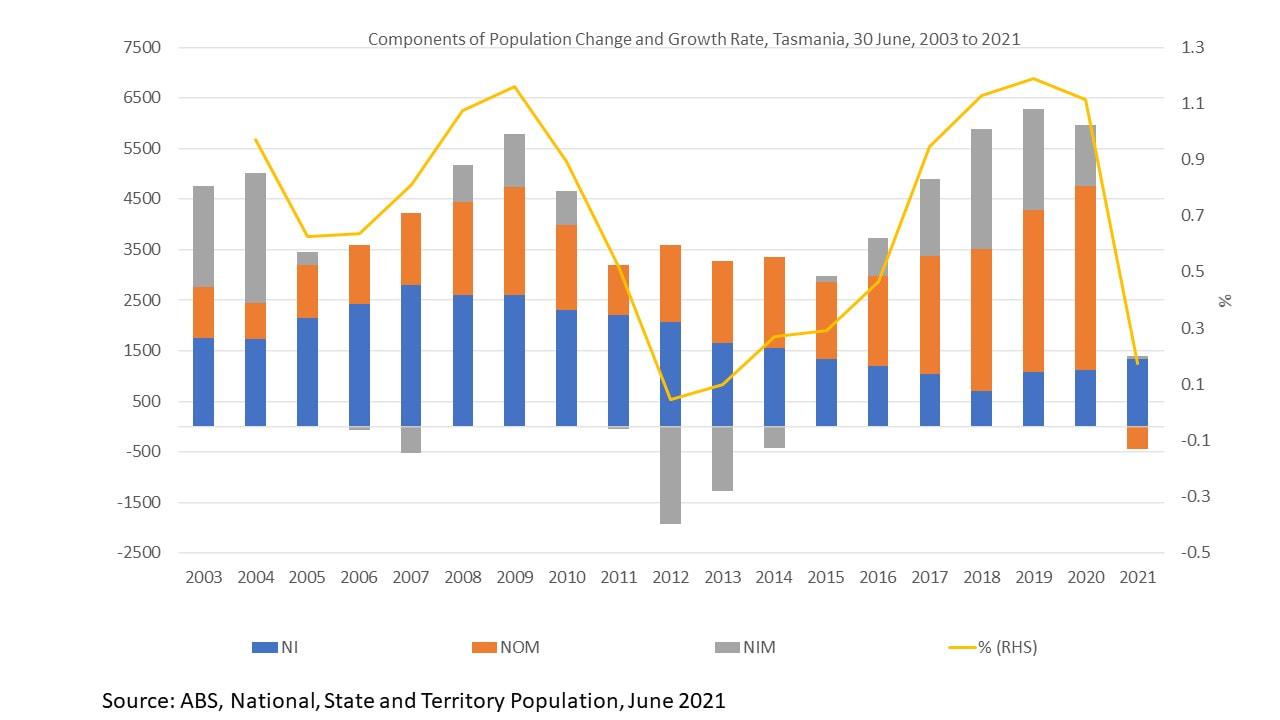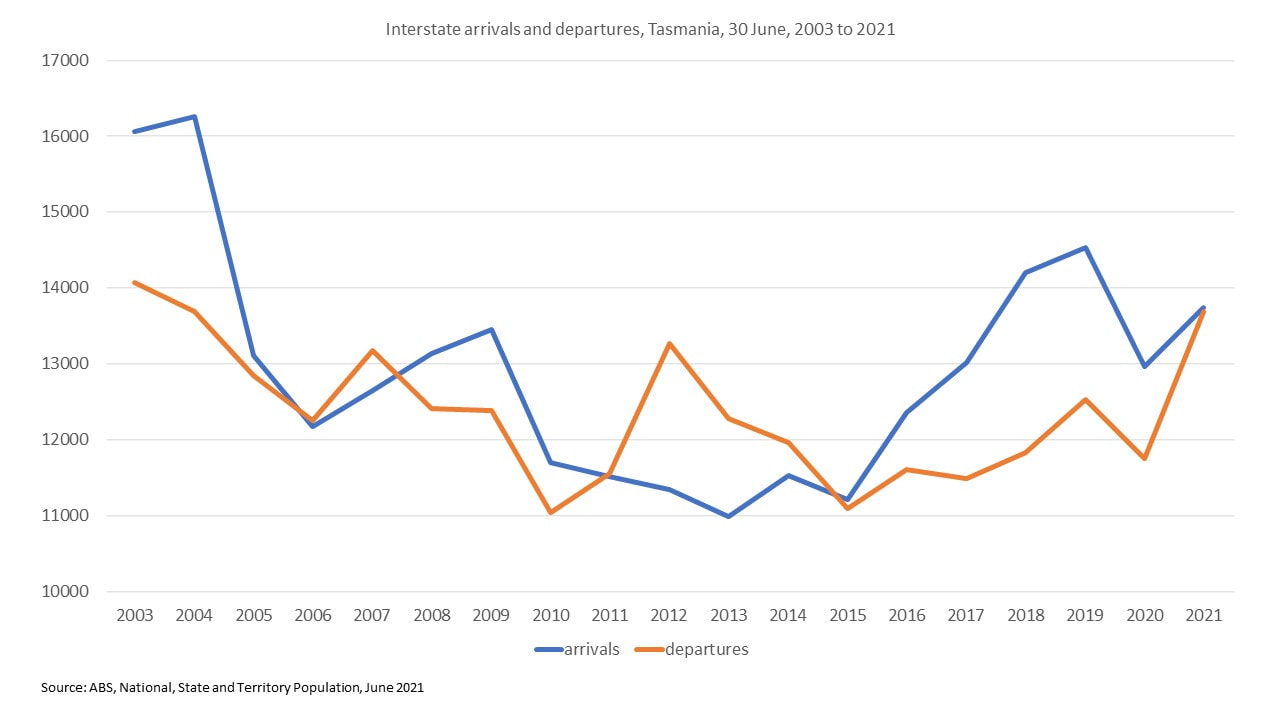However, contrary to popular belief, interstate migration to Tasmania is actually only one of six factors which influence population change and any potential growth. The other five are births, deaths, interstate migration from Tasmania to other parts of Australia, overseas migration to Tasmania and overseas migration from Tasmania to another country.
ABS population data released today reveals that Tasmania experienced population growth of 0.17% for the year to June 2021, compared with 1.12% for the previous 12 months, and considerably lower than that forecast by the Tasmanian Treasury (0.6%). This growth was almost entirely sourced from natural increase (more births than deaths). Net overseas migration was negative for the first time on record, offset slightly by a very small net interstate migration gain of 49 persons for the year.
While many commentators predict a further decline in the number of births and the fertility rate following the pandemic, as has been the case in historical economic recessions, COVID-19 was a health crisis first, rather than an economic one. While birth data for pandemic-conceived babies will not be available until late 2022, early anecdotal evidence and analysis of obstetrics and Medicare data suggests that there may be a short term increase in births throughout 2021 and 2022. This will contribute to increasing the population and also slowing the rate of population ageing. This is evident in TFR data for 30 June 2021, with an increase to 1.8 compared with 1.72 for the previous 12 months. However, data also shows a decline in the number of marriages throughout the pandemic so far. Given that marriage usually precedes first births, it is reasonable to assume that there may be a delay to starting parenthood for many couples, which may or may not be recuperated at a later date. Unless, of course, COVID-19 also reverses this historical life event pattern so that the first child arrives prior to marriage!
In terms of deaths, the pandemic forced us to be more conscious of our health and its impact on others’ health. Stay at home orders, physical distancing, washing hands and sanitising regularly contributed to lowering the infections circulating our community, particularly influenza. This resulted in a decline in both the death rate and the number of deaths in the state, particularly in the older age groups. This also contributes to population growth due to increasing natural increase (births minus deaths), and, in turn, contributes to the rate of ageing of our population.
In terms of overseas migration, immigration to Tasmania all but ceased during the pandemic, except for Australians returning home. Emigration from Tasmania increased considerably throughout the pandemic, likely the result of the large number of temporary visa holders such as international students, skilled migrants and other temporary workers, returning to their home countries due to the lack of support provided to them by the Australian Government during the pandemic. The number of migrants leaving Tasmania far exceeded the number of Australians returning to Tasmania from overseas, resulting in an overall net decline in overseas migration for Tasmania to 30 June 2021 for the first time on record of 444 persons. Prior to the pandemic the considerable growth in net overseas migration for Tasmania, and the age profile of those migrants, contributed to both population growth and slowing the rate of population ageing. Even with the opening of borders to Australia, it is unlikely that Tasmania will experience the same level of overseas migration in the short to medium term.
Which brings us to interstate migration for Tasmania. Historically, interstate migration has been the component of population change with the greatest influence not only on whether the state’s population grows or declines, but also on its rate of population ageing due to the age profile of the interstate migrants arriving in or leaving Tasmania. Net interstate migration is the difference between arrivals to Tasmania and the departures from Tasmania. In the five years prior to the pandemic, around 13,500 people arrived in Tasmania while around 12,000 left on average each year, leaving an annual net gain of around 1,500 people.
For the year to June 2021, Tasmania recorded a net interstate migration gain of 49 persons. In that period, 13,735 people arrived to live in Tasmania and 13,686 people left to live interstate. While the number of people arriving in Tasmania increased considerably compared with the previous 12 months, the number of people leaving Tasmania to live elsewhere was the highest since 2004, a trend that began in 2015.
Going forward as we continue to respond to the challenges that the COVID-19 pandemic presents us, it is difficult to predict what the impact on Tasmania's population growth will be, even with open borders. Critically, population change is much more complex than just interstate migrants knocking on our door. The decision to move interstate or overseas is a personal one, to or from Tasmania, and is influenced by a multitude of factors, as is whether or not to have a child (and how many to have). As we consider the future needs of our population, we need to appropriately plan for both opportunities and challenges in the context of all six components of population change.
NB this ABS data is for the period up to 30 June 2021, prior to the NSW, Victoria and ACT COVID-19 outbreaks and subsequent lockdowns, and prior to the comment made by the Premier.


